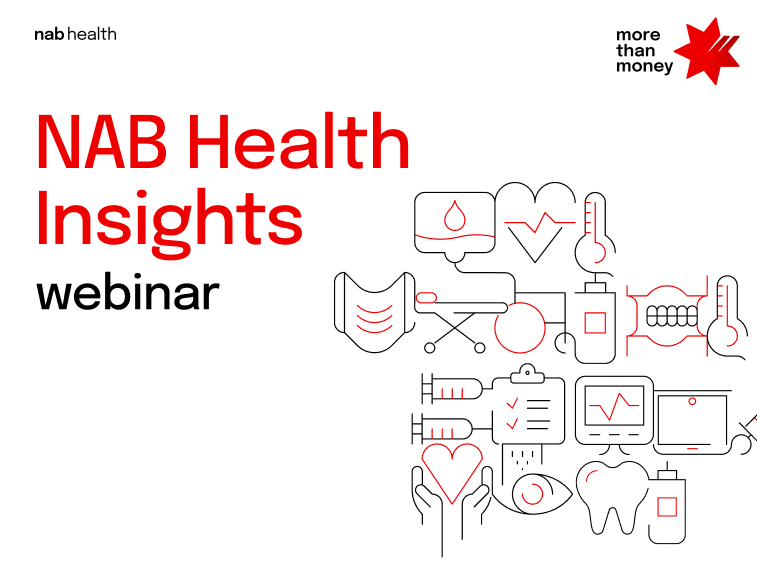You’re invited to our latest NAB Health Insights Webinar on Thursday 16th October 2025.


Webinar
Cash flow is the oxygen of business. The more effectively you manage it, the more successful and profitable your practice will be.

Cash flow is the oxygen of business. The more effectively you manage it, the more successful and profitable your practice will be.
It sounds simple, but how can health professionals achieve this? A good place to start is by consolidating your banking with one provider. This will give the practice greater control over receiving payments and will also provide business advisers with a clearer picture of the practice so they can give more support.
Monique Reynolds, Managing Partner of NAB Health NSW/ACT, says that offering customers a range of electronic payment channels via one provider will give a practice faster access to cleared funds and a simplified payment system that is easy to reconcile.
“Linking all customer payment channels like EFTPOS, BPAY, direct debit and a secure online solution like HICAPS, that interface quickly with health funds, will improve the customer experience, save you time and help reduce staff administration,” she says.
Also introducing simple strategies can encourage payment of accounts as Reynolds suggests:
Reynolds adds a note of caution when it comes to offering payment options. While it’s important to cater for your customers’ various situations, it’s also important to understand the cost to the practice of providing these options. For example, the cost of a 5 percent discount for payment within 14 days will slice $50,000 annually from the bottom line of a business with a $1 million turnover. But countering this is the cost of managing overdue invoices.
“You have to work out whether you’re prepared to develop and manage a collection plan for overdue invoices and balance the impact on your practice of these delays in payment,” she says.
On the expense side, Reynolds encourages businesses to review terms with suppliers and create a cash flow projection, factoring in regular monthly payments but also seasonality and growth projections. “If you can afford to pay a large sum early or upfront, you should – absolutely – negotiate a discount.
Staff can be encouraged to save money by setting expense targets, monitoring them frequently and tying remuneration to outcomes. This engages everyone in cost control and employees don’t necessarily have to be rewarded with money. “Often recognition in front of peers or a thank you card is a welcome reward.”
Reynolds suggests a three-pronged approach to cash flow management – a balanced mix of working capital sourced from turnover, supplier credit and bank debt, and regular reviews to help monitor costs.
She says that a cash flow projection and business plan are both imperative for a health business.
“A business plan provides a long-term view, with investment phases and goals clearly mapped. A cash flow plan enables a practice to ensure that cash flow is maintained and appropriate buffers put in place to further position a practice to ride out economic cycles and ensure sustainability.”
Your banker will be able to give you further advice on how to best maximise your cash flow.
© National Australia Bank Limited. ABN 12 004 044 937 AFSL and Australian Credit Licence 230686.